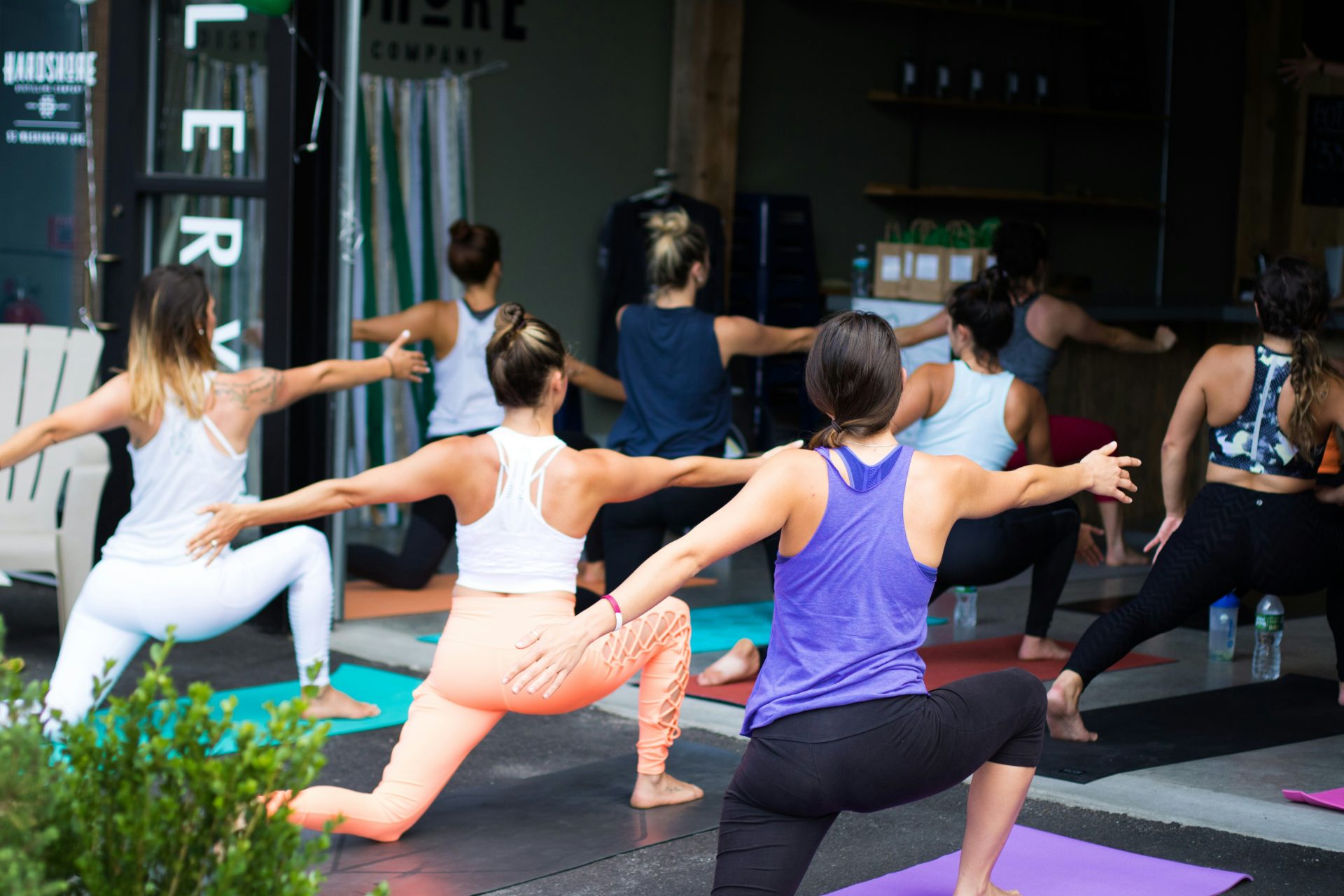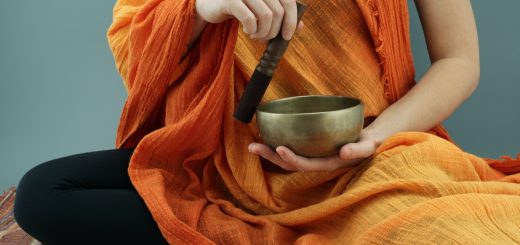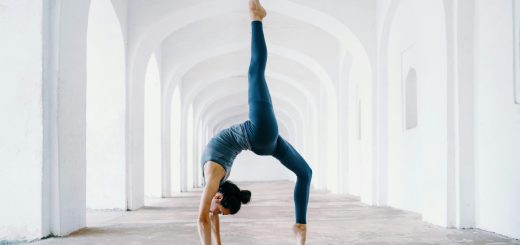Gentle Flow: Nurturing Your Body with Restorative Yoga

Hey there, amazing readers! 🖐️ Just a quick note: yes, we know there are a lot of ads here. Trust us, we get it—it’s not the prettiest look, but they help us keep this blog alive and kicking. Those pesky little ads cover the costs of all the behind-the-scenes magic, from hosting and tech stuff to creating content we hope you’ll love.
We’re committed to delivering quality posts, and your support (even just sticking around despite the ads) means everything to us. So, bear with us, and thanks for helping us keep the good vibes rolling. Now, on to the fun stuff! 😉
TRANSLATE BUTTON AT THE END OF THE ARTICLE
Overview
Restorative yoga is a gentle and therapeutic form of yoga that aims to relax and restore the body and mind.
Through a series of supported poses and mindful breathing techniques, this practice helps to release tension, reduce stress, and promote deep relaxation.
In this article, we will explore the concept of restorative yoga in depth, discussing its benefits, principles, supportive props, calming environment, and a step-by-step guide to a restorative yoga sequence.
We will also delve into common restorative yoga poses, breathing techniques, and the frequency of practice.
So, let’s dive in!
What is Restorative Yoga?
Restorative yoga is a unique practice that focuses on complete relaxation and rejuvenation of the body.
Unlike other yoga styles that involve dynamic movements and challenging poses, restorative yoga encourages stillness and deep rest.
It is a passive form of yoga where each pose is held for an extended period, typically ranging from 5 to 20 minutes.
These prolonged holds allow the body to fully surrender and release tension, promoting a state of deep relaxation and healing.
How Does Restorative Yoga Benefit Your Body?
Restorative yoga offers numerous benefits for both the physical and mental well-being.
Some of the key benefits include:
Stress Reduction: Restorative yoga activates the parasympathetic nervous system, triggering the relaxation response and reducing stress levels.
Deep Relaxation: The prolonged holds in restorative poses encourage a state of profound relaxation, helping to calm the mind and body.
Improved Flexibility: Gentle stretching in restorative poses helps to release muscle tension and improve flexibility over time.
Enhanced Circulation: The gentle movements and poses in restorative yoga stimulate blood flow, improving circulation and aiding in the removal of toxins from the body.
Reduced Anxiety and Depression: Restorative yoga promotes mindfulness and introspection, helping to alleviate symptoms of anxiety and depression.
Exploring the Gentle Flow of Restorative Yoga
Restorative yoga follows a gentle flow that emphasizes relaxation and surrender.
It is not focused on achieving a particular pose or pushing the body to its limits.
Instead, it encourages practitioners to listen to their bodies and honor their limitations.
The practice typically begins with a few minutes of centering and warm-up exercises to prepare the body for the restorative poses.
This is followed by a series of supported poses, each held for an extended period.
The gentle flow of restorative yoga allows the body and mind to unwind, promoting a sense of peace and tranquility.
Key Principles of Restorative Yoga Practice
To make the most of your restorative yoga practice, it is important to keep in mind the following key principles:
Comfort: Prioritize comfort over achieving a specific pose.
Use props and modifications to ensure that each pose feels supportive and relaxing.
Stillness: Embrace stillness and allow yourself to fully surrender to each pose.
Avoid fidgeting or making sudden movements.
Breath Awareness: Pay attention to your breath throughout the practice.
Deep, slow breathing helps to activate the relaxation response and deepen the sense of relaxation.
Mindfulness: Practice mindfulness by observing your thoughts and sensations without judgment.
Allow yourself to be fully present in the moment.
Intuition: Listen to your body and honor its needs.
If a pose feels uncomfortable or painful, make necessary adjustments or come out of the pose.
Supportive Props for Restorative Yoga Poses
Props play a crucial role in restorative yoga, providing support and enhancing the relaxation experience.
Some commonly used props include:
Yoga Bolsters: Bolsters are firm pillows used to support different parts of the body, such as the back, legs, or neck.
Blankets: Blankets can be used to cushion and support the body in various poses.
They help to create a sense of comfort and relaxation.
Yoga Blocks: Blocks are used to modify poses and provide additional support when needed.
They can be placed under the hands, feet, or hips.
Straps: Straps are helpful for gently stretching tight muscles and maintaining proper alignment in certain poses.
Using these props, you can adapt restorative poses to your body’s needs and find the right level of support for each posture.
Creating a Calming Environment for Restorative Yoga
Creating a calming environment is essential to fully embrace the restorative yoga practice.
Here are some tips to set the mood for a peaceful and nurturing experience:
Quiet Space: Choose a quiet and clutter-free space where you can practice without distractions.
Soft Lighting: Dim the lights or use candles to create a soothing ambiance in the room.
Comfortable Temperature: Ensure the room is at a comfortable temperature, neither too hot nor too cold.
Soothing Music: Play soft and calming music that enhances relaxation and promotes a sense of tranquility.
Aromatherapy: Use essential oils or incense with calming scents, such as lavender or chamomile, to create a relaxing atmosphere.
By creating a calming environment, you can deepen the benefits of your restorative yoga practice and create a sanctuary for relaxation.
A Step-by-Step Guide to a Restorative Yoga Sequence
To help you get started with a restorative yoga practice, here is a simple step-by-step guide to a restorative yoga sequence:
Begin in a comfortable seated position, take a few moments to center yourself and connect with your breath.
Perform gentle warm-up exercises like neck rolls, shoulder rolls, and seated twists to release tension in the body.
Move into supported Child’s Pose by placing a bolster or rolled-up blanket between your thighs and resting your torso on it.
Stay in this pose for 5-7 minutes, focusing on deep breathing and allowing the body to surrender.
Transition into Legs-Up-The-Wall pose by scooting your hips close to a wall and extending your legs up against it.
Place a folded blanket or bolster under your hips for support.
Remain in this pose for 10-15 minutes, feeling the gentle stretch in the back of your legs and the sense of grounding.
Come into Supported Bridge pose by placing a bolster or block under your sacrum and extending your legs on the ground.
Allow your body to fully relax into the pose for 5-7 minutes, focusing on your breath and releasing tension from your lower back.
Finish your sequence with a gentle Savasana (Corpse Pose) by lying on your back with a bolster or rolled-up blanket under your knees.
Remain in this pose for at least 10 minutes, surrendering to stillness and relaxation.
Remember to listen to your body throughout the sequence and modify poses as needed to ensure comfort and safety.
Common Restorative Yoga Poses for Gentle Flow
Restorative yoga offers a variety of poses that promote relaxation and deep restoration.
Some common restorative yoga poses include:
Supported Child’s Pose: This pose gently stretches the lower back while providing a sense of safety and grounding.
Legs-Up-The-Wall Pose: In this pose, the legs are elevated against a wall, promoting circulation and relaxation.
Supported Bridge Pose: This pose helps to release tension in the lower back and open the chest.
Reclining Bound Angle Pose: This pose opens the hips and stretches the inner thighs while providing support to the body.
Supported Twist: Supported twist poses help to release tension in the spine and promote spinal mobility.
These poses, along with many others, can be incorporated into a restorative yoga sequence to create a nurturing and rejuvenating practice.
Breathing Techniques to Enhance Your Restorative Yoga Practice
Breathing techniques, or pranayama, are an integral part of restorative yoga practice.
They help to deepen relaxation, promote mindfulness, and enhance the benefits of the poses.
Here are two simple breathing techniques to incorporate into your restorative yoga practice:
Diaphragmatic Breathing: Lie down on your back and place one hand on your belly.
Inhale deeply, allowing your belly to rise as you fill your lungs with air.
Exhale fully, allowing your belly to fall.
Continue this slow and deep breathing for several minutes, focusing on the rise and fall of your belly.
Extended Exhalation: Inhale deeply through your nose, then exhale slowly and audibly through your mouth, making a “ha” sound.
Aim to make your exhale twice as long as your inhale.
Repeat this extended exhalation for several breaths, allowing it to calm your nervous system and bring a sense of relaxation.
These breathing techniques can be practiced during any restorative pose to enhance relaxation and deepen the mind-body connection.
How Often Should You Practice Restorative Yoga?
The frequency of your restorative yoga practice depends on your personal needs and schedule.
Ideally, practicing restorative yoga 2-3 times per week can bring noticeable benefits.
However, even a short daily practice of 15-20 minutes can be beneficial.
It is important to prioritize consistency rather than duration.
Listen to your body and adjust the frequency of practice based on what feels right for you.
Conclusion
Restorative yoga is a gentle and nurturing practice that allows you to slow down, relax, and restore your body and mind.
By incorporating supportive props, creating a calming environment, and following the principles of restorative yoga, you can experience the numerous benefits this practice has to offer.
Whether you are seeking stress reduction, improved flexibility, or deep relaxation, restorative yoga provides a safe and accessible path to inner peace and well-being.
So, take some time for yourself, embrace the healing power of restorative yoga, and nurture your body and soul.

The Enlightenment Journey is a remarkable collection of writings authored by a distinguished group of experts in the fields of spirituality, new age, and esoteric knowledge.
This anthology features a diverse assembly of well-experienced authors who bring their profound insights and credible perspectives to the forefront.
Each contributor possesses a wealth of knowledge and wisdom, making them authorities in their respective domains.
Together, they offer readers a transformative journey into the realms of spiritual growth, self-discovery, and esoteric enlightenment.
The Enlightenment Journey is a testament to the collective expertise of these luminaries, providing readers with a rich tapestry of ideas and information to illuminate their spiritual path.
Our Diverse Expertise 🌟
While our primary focus is on spirituality and esotericism, we are equally passionate about exploring a wide range of other topics and niches 🌍📚. Our experienced team is dedicated to delivering high-quality, informative content across various subjects ✨.
To ensure we provide the most accurate and valuable insights, we collaborate with trusted experts in their respective domains 🧑🏫👩🏫. This allows us to offer well-rounded perspectives and knowledge to our readers.
Our blog originally focused on spirituality and metaphysics, but we’ve since expanded to cover a wide range of niches. Don’t worry—we continue to publish a lot of articles on spirituality! Frequently visit our blog to explore our diverse content and stay tuned for more insightful reads.




















